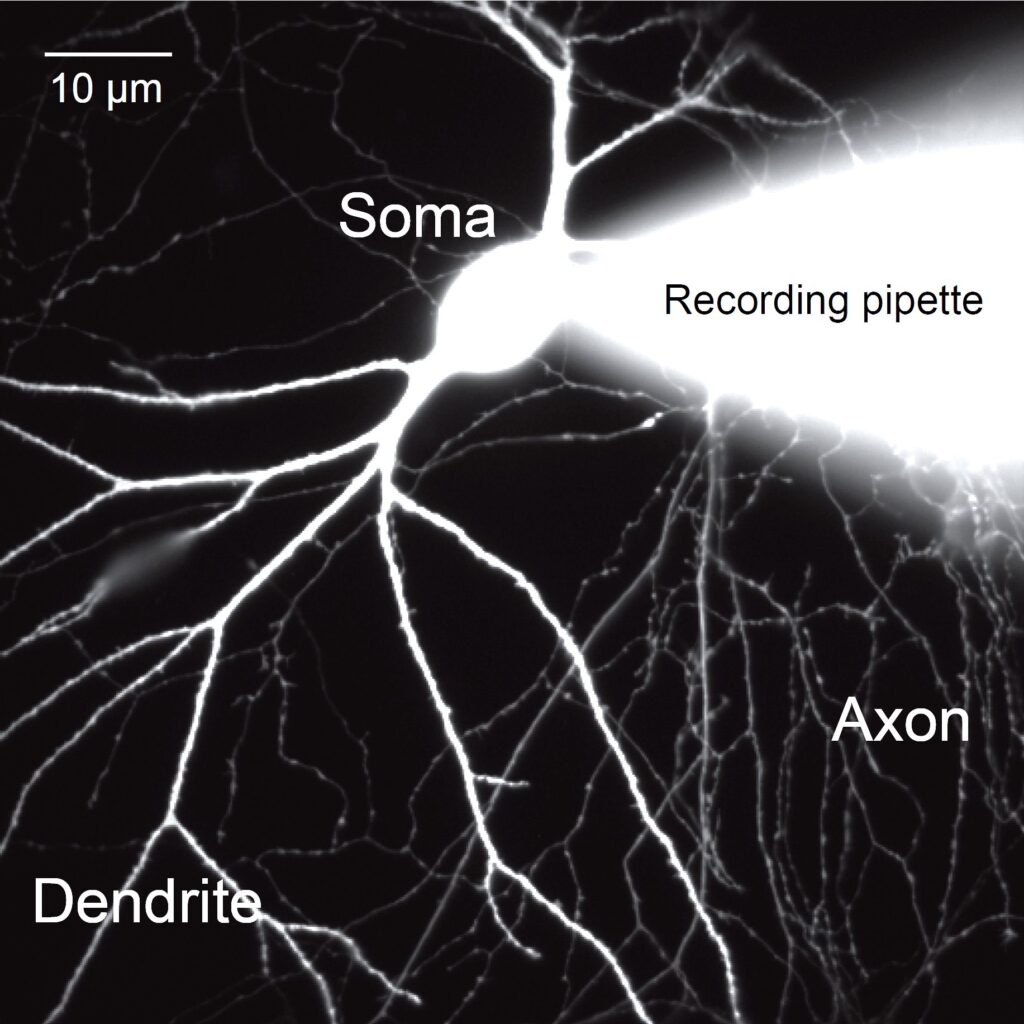Biophysics and Molecular Mechanisms of Synaptic Transmission
1) The Presynaptic Calcium Channels
Calcium channels are concentrated in the presynaptic plasma membrane at sites for exocytosis called active zones. Synaptic strength, speed, and plasticity-hallmark features of synaptic transmission- rely on the precise positioning of calcium channels within 10-200 nm of release-ready vesicles. Previous work on the organization and targeting mechanisms of calcium channels can be broadly summarized in two models. In the first, calcium channels or calcium entry provides the signal to guide synapse organization. In the second, calcium channels are anchored by the active zone scaffolds and merely function as an actuator to trigger vesicle release. Our work has demonstrated that active zone formation does not rely on calcium channels or calcium influx supporting model two.
Reference: Held, Liu, et al. Neuron 2020

Calcium imaging in presynaptic boutons. Left, Strategy for measuring presynaptic calcium influx in cultured neurons. A whole-cell recording was performed using a pipetted filled with Alexa594 and Fluo5F. Right, Calcium influx in response to 5 action potentials (10 Hz) evoked by injecting current into the cell through the recording pipette.

Removal of calcium channels does not change synapse formation. Left, Sample images and traces of presynaptic calcium transients evoked by a single action potential. Removal of CaV2 family eliminates calcium influx. Right, Sample electron microscopic images (top) and 3D reconstructions (bottom) of serially sectioned synapses of high-pressure frozen neurons. No significant change was detected without presynaptic calcium channels.
2) The Active Zone
Neurotransmitter release is determined by the number of releasable vesicles and their probability of release. Proteins at the active zone set these parameters by controlling the presynaptic signal and through docking and priming of synaptic vesicles. We have characterized the roles of several active zone proteins in synaptic transmission, including ELKS, RIM, and Liprin-α3.
Reference: Liu, et al. Journal of Neuroscience 2014, Held, Liu, et al. 2016, Wong, Liu, et al. 2018

Active zone. Immunostaining of zone protein ELKS and vesicle marker synapsin in cultured neurons.